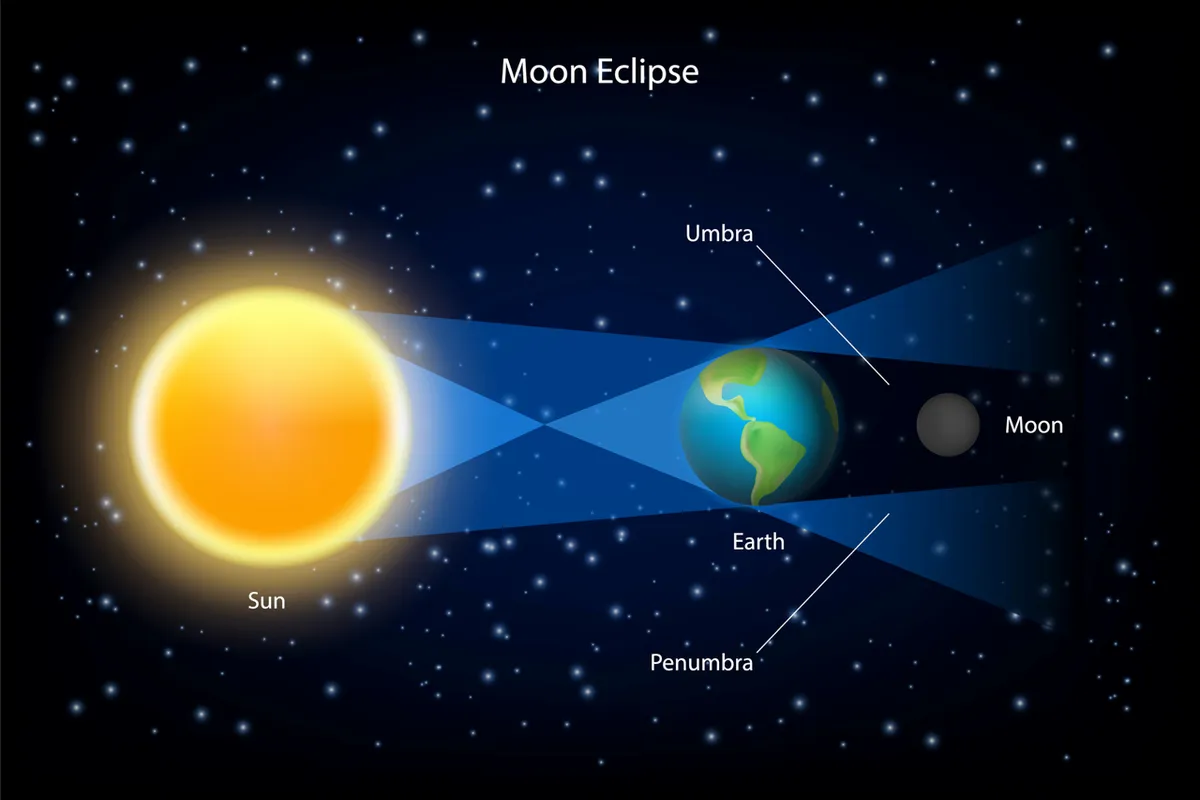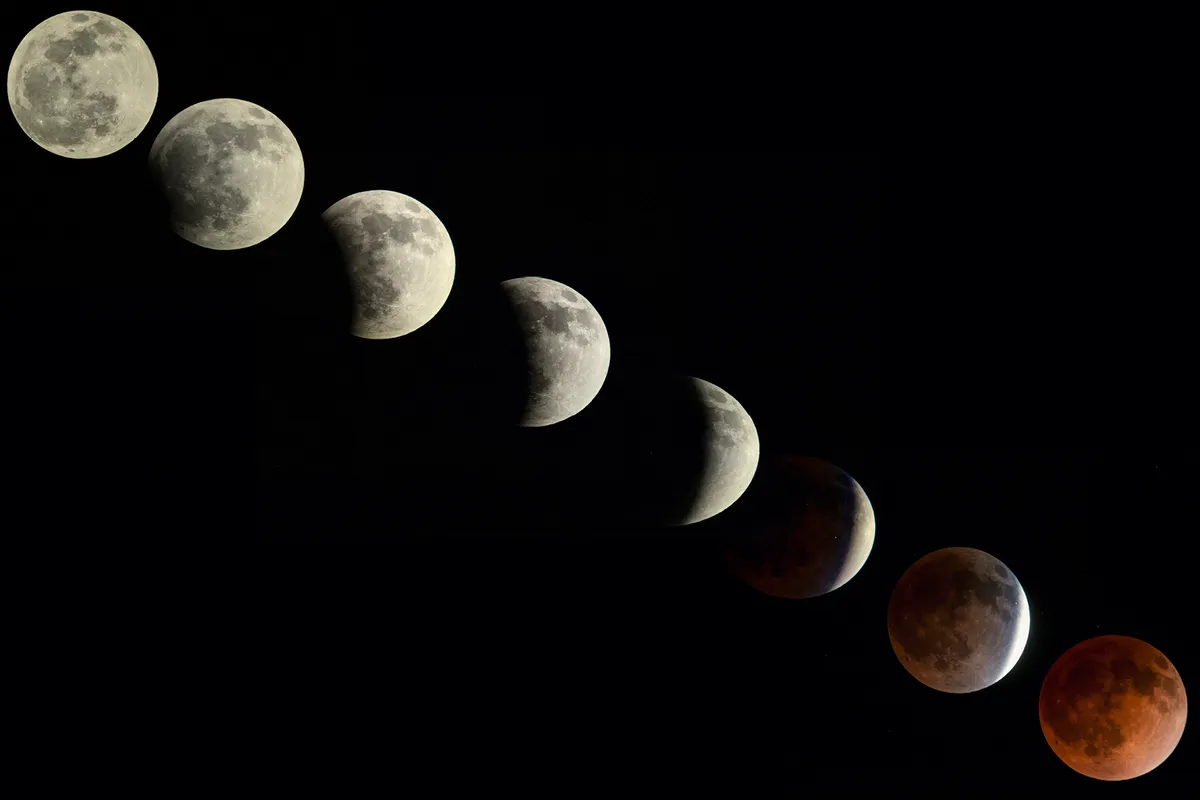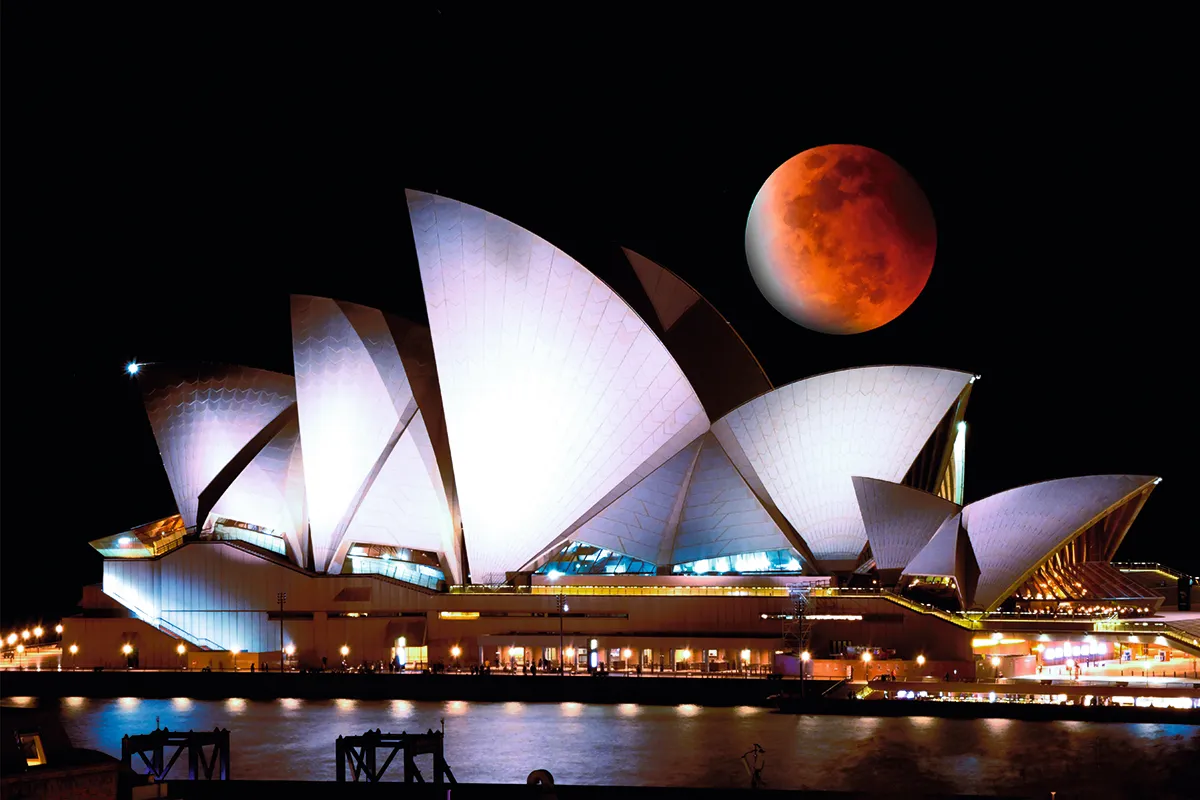Early risers will be rewarded with a lunar eclipse on 16 May 2022, when we'll be able to see the blood-red Moon just before sunrise here in the UK.
But what time does the lunar eclipse take place? Why does the umbra and penumbra matter when we're talking about eclipses? And, why does the Moon turn red during a lunar eclipse? Answers to these questions, and more, are below.
For those who missed it, you can check out our fantastic gallery of the best Wolf Moon pictures, the first full Moon of 2022. If you’re looking forward to clear nights this year, why not plan ahead with our full Moon UK calendar and astronomy for beginners guide?
When will the lunar eclipse occur?
The total eclipse of the Moon will be visible from the UK on Monday 16 May 2022. The event begins at 2:32am BST in the UK, with totality starting at 4:29am BST. Totality will last for just under 85 minutes.
The best time to settle down to watch the eclipse will be around 3:37 BST, at the start of the visual phase when Earth’s umbra starts to traverse across the Moon (the penumbral phases are not visible). If we are provided with clear skies, the Moon will begin to turn red at this time.
This is an animation of the total lunar eclipse on the 16 May 2022, as the Moon passes through the penumbra into the umbra and turn red as it reaches totality (UTC is one hour behind BST):
© NASA's Scientific Visualization Studio
At totality, which lasts for just under 85 minutes, the Moon will appear completely red and will be visible close to the horizon in the west-southwest. If we’re lucky, it should provide an excellent opportunity for astrophotography.
Just before moonset at 5:06am, the eclipse will reach its greatest magnitude while the Moon is still above the horizon. The true maximum won’t be able to be seen from the UK, as from our perspective, the Moon will have dropped below the horizon.
The Moon will set at 5:10am in the west-southwest.
What causes a lunar eclipse?
A lunar eclipse occurs when the Sun, Earth and Moon are in perfect alignment and the Earth’s shadow blocks sunlight from reflecting off the surface of the Moon. Although, the Moon does not disappear completely; instead, it will turn a bright copper-red colour.

During a lunar eclipse, the Moon will first pass into the penumbra, the outer part of the Earth’s shadow, then into the umbra at totality, then back into the other side of the penumbra, before leaving the shadow altogether.
Why does the Moon turn red?
The red colour is caused by the refractive and scattering effects of the planet’s atmosphere. Particles and gases in the atmosphere scatter sunlight in all directions, in a process called Rayleigh scattering. Because light travels in waves, and each colour in the light spectrum has a different wavelength, different colours get scattered differently. Blue light has a shorter wavelength and is scattered more easily than red light, which has a longer wavelength and is not so easily scattered.
During a lunar eclipse, the Earth blocks sunlight from directly illuminating the surface of the Moon. However, light can still pass through our atmosphere, so the Moon will not completely disappear. The long wavelengths of red light can penetrate the atmosphere, which, from the perspective of the Moon, would resemble a ring (annulus) around the Earth.

The more dust or cloud cover that there is in the atmosphere, the redder the Moon will look from our vantage point. Volcanic eruptions that send particulates high into the stratosphere, can often block light and result in a ‘darker’ eclipse.
NASA describes this effect as “It’s as if all the world’s sunrises and sunsets are projected onto the Moon.”
What’s the difference between the Earth’s umbra and penumbra?
During a lunar eclipse, there are two shadows that are cast on the Moon: a lighter, outer shadow called the penumbra, and a darker, inner shadow called the umbra.
The type of eclipse is determined by how much of the Moon passes within the dark, inner umbra.
A partial lunar eclipse occurs when the Moon does not fully enter the umbra, whereas a total lunar eclipse occurs when the whole of the Moon passes into the umbra.
Both this lunar eclipse and the next in November 2022 will reach totality.
Why do lunar eclipses last longer than solar eclipses?
Totality during a solar eclipse may range from a few seconds to a few minutes. However, during a lunar eclipse, totality can last much longer, as is the case on 16 May 2022, at just shy of 85 minutes.
This is because the Earth is much larger than the Moon, so the shadow cast by the Earth onto the Moon, covers the Moon for longer. Conversely, a solar eclipse happens when the Moon’s shadow is cast over the Earth (i.e., the Moon blocks the Sun), so solar eclipses are much shorter in duration.
The time of the eclipse is relative to the size of the body casting the shadow, and therefore the time taken to move through its umbra.
When is the next lunar eclipse?
The next lunar eclipse will take place on 8 November 2022, during the Beaver Moon. It too, will be a total lunar eclipse and will be centred over the Pacific Ocean. However, after this, we’ll have to wait until 14 March 2025 for the next total lunar eclipse.

Why does a lunar eclipse only happen during a full Moon?
Like a solar eclipse that only occurs during a new Moon, a lunar eclipse only occurs during a full Moon. A lunar eclipse happens when the Sun, Earth and Moon are perfectly lined up, and this alignment only happens during the Full Moon phase of the lunar cycle.
Viewing tips
Unlike solar eclipses, which you must never look at directly, it’s safe to look at a lunar eclipse with the naked eye and no specialist equipment is needed. This is because the Moon only reflects the sunlight and doesn’t get any brighter than a full Moon (or a supermoon).
Total (and partial) eclipses of the Moon are very easy to see, all you need are clear skies and a good view of the Moon from where you are. It’s always a good idea to minimise light pollution from other sources where possible.
Be sure to check your local weather forecast before you head out. Here in Bristol, it’s expected to be mild, around 12° with a light cloud, so conditions are favourable.
Here’s to clear skies!
Read more:


